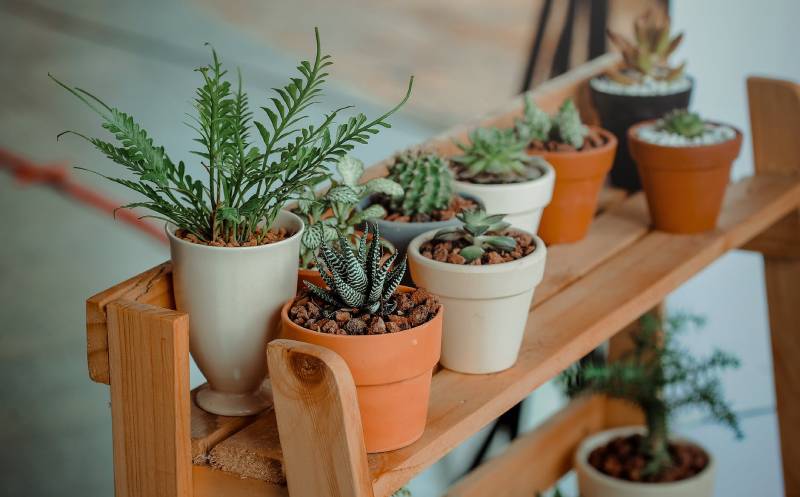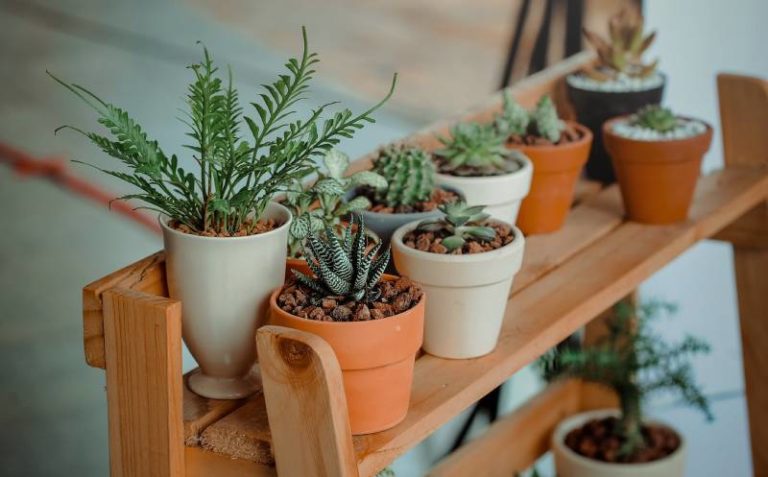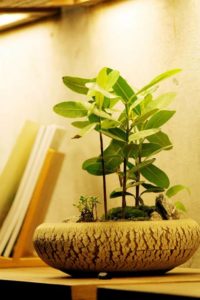Indoor houseplants add visual beauty to your home and provide many health benefits. From improving concentration and productivity to reducing stress and elevating mood, there are numerous mental health benefits you can expect from these plants.
Studies have shown that many houseplants also act as air purifiers. Their leaves and roots absorb the air pollutants and harmful gases present in the surrounding environment, giving you a much better air quality inside your home.
 However, picking the right houseplants for your place can be a challenging task. Not only you have to consider the amount of space you have, but also how much care you can give to these plants. Additionally, you may have to think about the room conditions, color, fragrance, and toxicity of the plant to choose something that is the right fit for you.
However, picking the right houseplants for your place can be a challenging task. Not only you have to consider the amount of space you have, but also how much care you can give to these plants. Additionally, you may have to think about the room conditions, color, fragrance, and toxicity of the plant to choose something that is the right fit for you.
At times, it can also be very frustrating to look after an indoor plant that demands too much care. Fortunately, there are many indoor houseplants that don’t require so much attention, so if you choose wisely, caring for a houseplant will not be that stressful for you.
Choosing the right indoor houseplants for your place
So many times, people look at an indoor plant for sale and get so excited that they buy it instantly. However, as they take this plant home, it gets sick and dies pretty quickly.
Buying an indoor houseplant based entirely on its appearance is not right. If you truly want the plant to last a long time and reap its health benefits, you must know if you can provide the right environment and care to it.
Lighting
 Indoor houseplants have different light requirements, which is essential for their growth and survival. Most indoor plants grow well in a natural light setting, but some may require artificial lighting to grow well indoors. Artificial lighting is ideal for rooms without windows and during the winter season when the sun is visible only for a few hours.
Indoor houseplants have different light requirements, which is essential for their growth and survival. Most indoor plants grow well in a natural light setting, but some may require artificial lighting to grow well indoors. Artificial lighting is ideal for rooms without windows and during the winter season when the sun is visible only for a few hours.
Most houseplants cannot survive very long when placed under direct sunlight. If you have a south-facing window that experiences a full sun, desert cacti and succulents are the only indoor plants that will grow well there.
Indoor plants; especially, the flowering types, grow well in partial sunlight and shade. Placing them near a west or east-facing window will give them some hours of sunshine, which is enough and best to help them grow.
If you are a beginner grower, you may want to go with species that grow well in shaded or low light conditions. Although these species won’t be the flowering types, they’re a lot easier to develop. Indoor houseplants that grow well in low light conditions include the cast iron plant, dragon tree, parlor palm, lucky bamboo plant, spider plant, peace lily, mother in laws tongue and corn plant.
Water
Most people do not realize the fact that houseplants usually die from too much water instead of too little. Watering an indoor houseplant may seem simple enough, but in reality, it’s much more complicated than you think. Other than knowing precisely when to water and how often, there are other factors like the individual plant needs that make it complicated to grasp how to water houseplants properly.
Tap water and chlorinated water is normally safe for most houseplants. Nevertheless, filtered water is even more beneficial as it does not hold salts that can accumulate in the soil over a period and cause concerns. Furthermore, water at room temperature is perfect for indoor plants, too warm or cold water can damage the leaves of most houseplants.
If you take hints from nature, you can easily discover how much water a plant may require. For example, plants like philodendrons that grow in a tropical region require more water as compared to plants like cactus and succulents that are found in the deserts.
Overwatering your houseplants plants is never a good idea. Their roots need oxygen without which they can die. Although containers for houseplants have drainage holes to remove the excessive water, wet soil can still prevent air from reaching the roots, which can severely hamper the plant’s growth.
Temperature
 Houseplants mostly come from tropical or subtropical regions where the temperature is consistently warmer. So, the temperature inside our rooms is usually the perfect match for these plants. Indoor plants do not get affected by a small drop (5 – 10°C) in temperature, but anything lower can severely affect their growth.
Houseplants mostly come from tropical or subtropical regions where the temperature is consistently warmer. So, the temperature inside our rooms is usually the perfect match for these plants. Indoor plants do not get affected by a small drop (5 – 10°C) in temperature, but anything lower can severely affect their growth.
Most houseplants show the best growth at 15 – 24°C. The room temperature of most rooms is already close to that range, so they are best suited for this environment.
A lower temperature is usually more harmful to indoor plants as compared to a higher temperature. Indoor houseplants get severely affected by colder weather. A lower temperature can hamper their growth significantly. Even worse, when colder weather is accompanied by overwatering, the plants can eventually die.
Higher temperatures above 24°C inside a room can be too high for a houseplant. They can only tolerate such high temperatures outdoors when they get additional humidity and sunlight, which promotes their growth.
Light, water, and temperature are the three main factors that will help you to pick the right houseplant for your space. Additionally, you may also want to look into each plant’s fragrance and health benefits before making a selection.